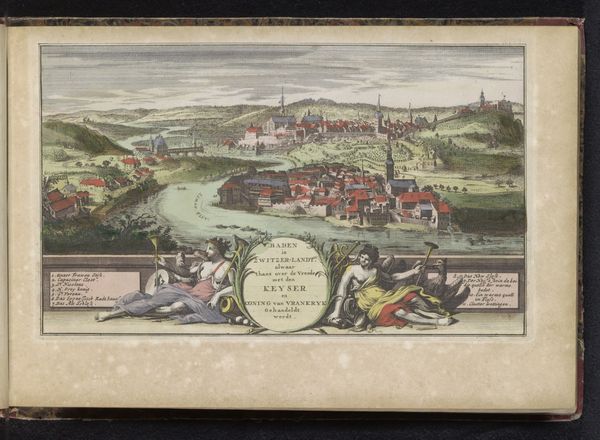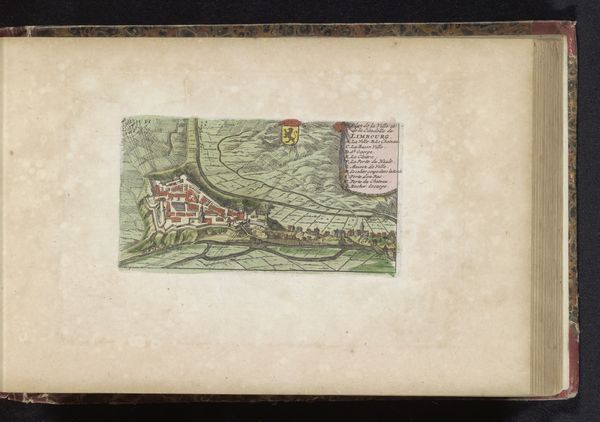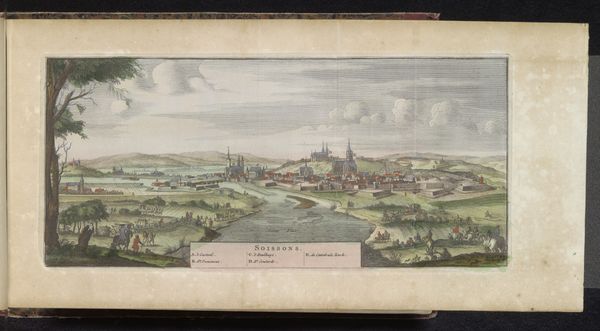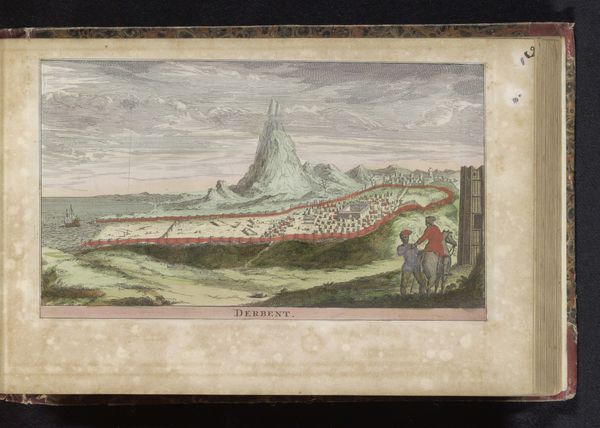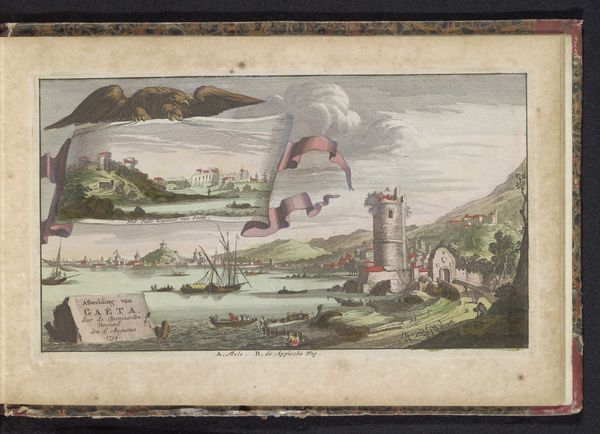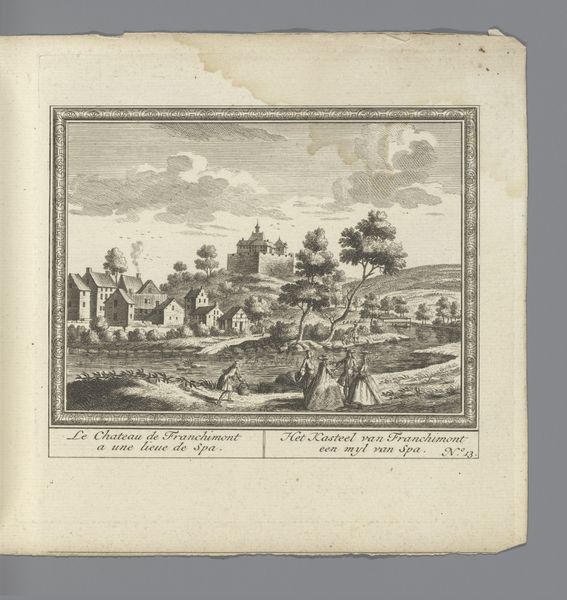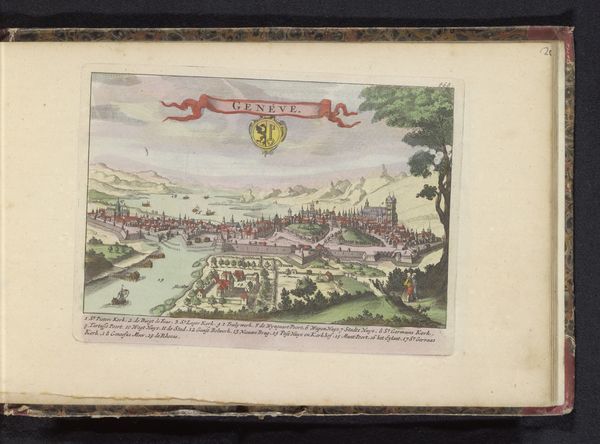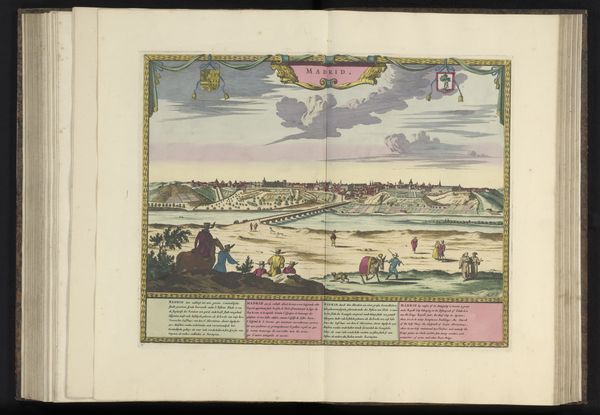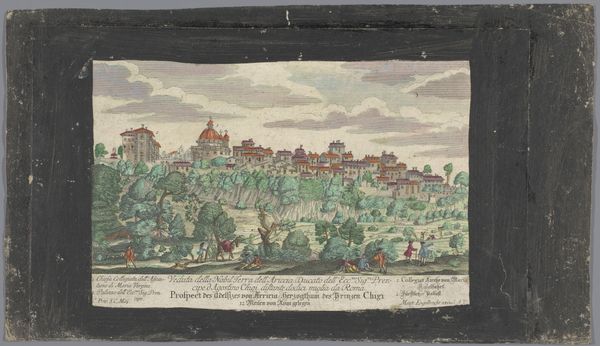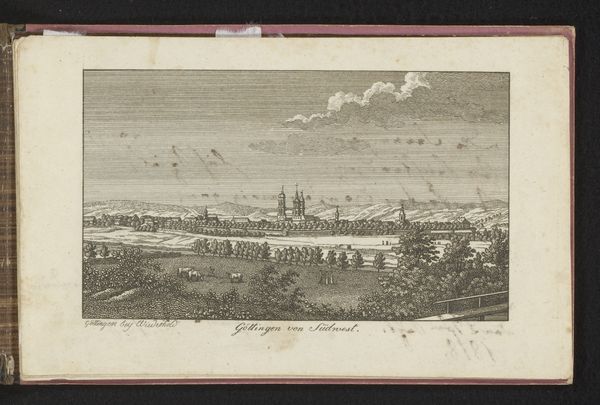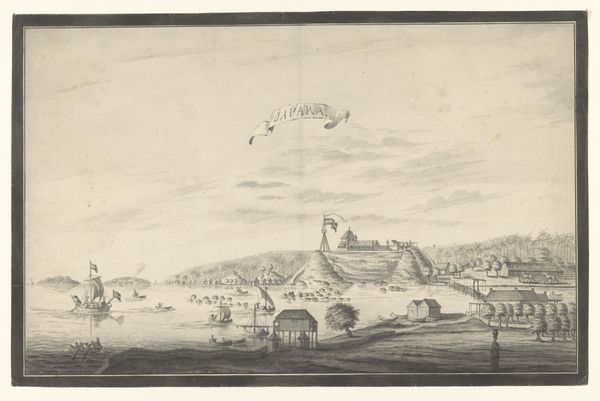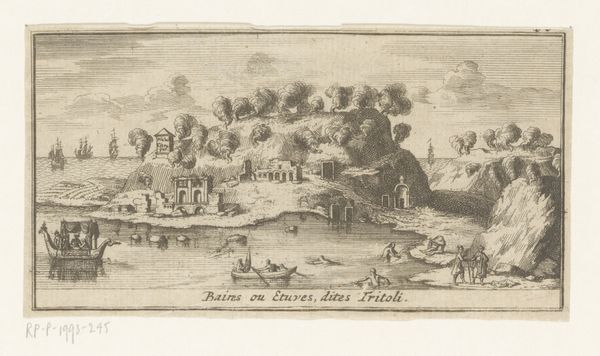
drawing, print, watercolor
#
drawing
#
water colours
#
baroque
# print
#
watercolor
#
coloured pencil
#
cityscape
Dimensions: height 151 mm, width 273 mm
Copyright: Rijks Museum: Open Domain
Curator: What a find! This delightful image is a baroque-era print, probably enhanced with watercolor, called "Gezicht op Neuchâtel," or "View of Neuchâtel," dating back to 1735. The artist remains anonymous, which only adds to the mystique. Editor: It has an airiness about it, almost dreamlike. The pastel colors and detailed cityscape give the impression of peering into a fairy tale town. Curator: Absolutely! The panoramic view, captured from slightly elevated ground, positions us, the viewers, as almost benevolent observers. Editor: Except who exactly is doing the viewing? The inclusion of cupids in the lower-left foreground seems so strategically placed, suggesting a rather insidious voyeurism—inviting the predominantly white and male gaze toward an objectified "Neuchâtel aan Zee." Curator: A keen observation! Though, the cupid themselves seem almost oblivious, preoccupied with unfurling the very banner that announces the town's name. There's an undeniable theatrical quality about them—they beckon to be the part of the show. Editor: But it also performs, whether the artist intended it or not, a whole discourse of what Mary Louise Pratt called "imperial eyes"—producing and framing the "distant scene" for western consumption and authority. Look how they are also juxtaposed to indigenous population from this place! It is fascinating indeed! Curator: I agree. There's an overt embrace of the picturesque— the winding roads, quaint buildings clustered within protective walls, the sailboats gently gliding along the lake… It is almost a propaganda for what idyllic life of a small bourgeoisie looked like. Editor: A carefully crafted tableau. And even that heavy cloud hanging ominously overhead feels almost deliberately positioned to amplify this idealized tranquility through contrast. It subtly enhances our yearning for such "peace". Curator: Precisely. The use of delicate, almost fragile line work to depict these architectural details imbues the city with a certain charm and permanence. Editor: It certainly evokes a world in transition, doesn't it? And makes me appreciate how complex it really is, even while looking at what looks like a simple image! Curator: Absolutely, art always surprises us, doesn't it? It may evoke at the very beginning a first simple thought but in time unveils hidden layers and profoundity in interpretation.
Comments
No comments
Be the first to comment and join the conversation on the ultimate creative platform.
